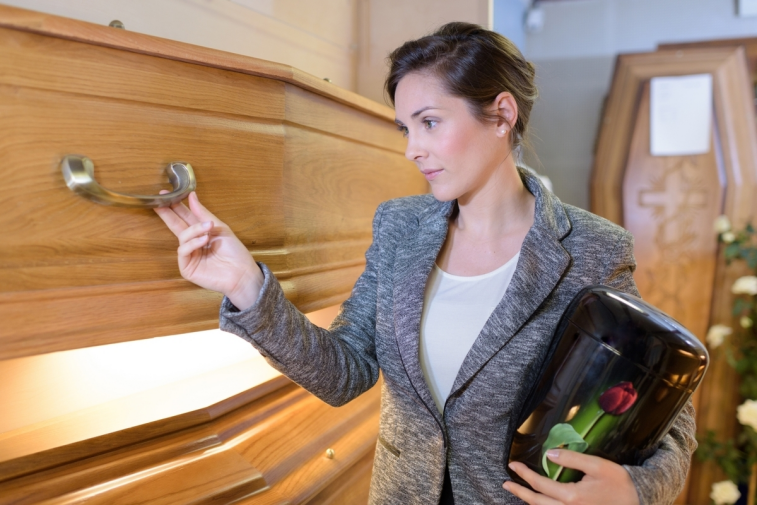Understanding The Costs of Cremation in Australia: A Guide For Families
Losing a loved one is a deeply emotional experience, and alongside grief, there are often many practical and financial considerations to navigate. In Australia, cremation has become a popular alternative to traditional burial due to its lower cost and simplicity. This article outlines the various factors that contribute to the cost of cremation in Australia, helping individuals make informed decisions when planning for end-of-life arrangements.
Losing a loved one is a deeply emotional experience, and alongside grief, there are often many practical and financial considerations to navigate. In Australia, cremation has become a popular alternative to traditional burial due to its lower cost and simplicity. This article outlines the various factors that contribute to the cost of cremation in Australia, helping individuals make informed decisions when planning for end-of-life arrangements.

Key Factors Influencing Cremation Costs
Several components impact the overall cost of a cremation, and understanding each one can help manage expenses.
1. Basic Service Fees
Funeral homes charge a basic service fee, which covers essential services such as arranging the cremation, filing necessary paperwork, coordinating with the crematorium, and transporting the deceased. On average, these fees range between AUD 2,000 and AUD 5,000, though they can vary depending on the funeral provider and location.
2. Cremation Fee
The actual process of cremation involves specialized equipment and facilities. The cremation fee typically costs between AUD 600 and AUD 1,500, depending on the crematorium's location and service.
3. Optional Embalming and Viewing Services
While embalming is not mandatory for cremation, some families choose this service to allow for a wake or viewing. Embalming can range from AUD 500 to AUD 800, while the cost for the use of a viewing room or chapel may add between AUD 500 and AUD 1,200.
4. Caskets and Containers
For cremation, a suitable container is required to hold the body. Simple cremation containers can cost as little as AUD 200, while more elaborate caskets or bespoke designs can range from AUD 1,000 to AUD 4,000 or more.
5. Urns and Keepsakes
After cremation, the remains are stored in an urn. Urns vary greatly in price, with basic models starting from AUD 50 and high-end or customized urns reaching several thousand dollars. Some families opt for keepsakes, such as jewelry that holds a small portion of the ashes, with prices ranging from AUD 100 to AUD 500 or more.
6. Transportation and Transfer Services
Transporting the deceased from the place of death to the funeral home or crematorium can add additional costs. These transportation fees usually range from AUD 200 to AUD 600, depending on distance and the specific services required.
7. Memorial Services
If a memorial service is held, additional expenses may arise for venue rental, catering, flowers, and professional services like celebrants or officiants. Depending on the scale of the service, memorial costs can range from AUD 1,000 to AUD 5,000.
8. Legal and Documentation Fees
Death certificates and cremation permits are required by law, and securing these documents generally incurs a fee of between AUD 50 and AUD 200.
Average Cremation Costs Across Major Cities
The cost of cremation can vary significantly across Australia's major cities, with pricing influenced by local regulations, service providers, and demand.
- Sydney: AUD 5,000 to AUD 8,000
- Mebourne: AUD 4,500 to AUD 7,500
- Brisbane: AUD 4,000 to AUD 7,000
- Perth: AUD 4,500 to AUD 7,000
- Adeaide: AUD 4,000 to AUD 6,500
- Hobart: AUD 3,500 to AUD 6,000
- Canberra: AUD 4,000 to AUD 6,500
- Darwin: AUD 4,200 to AUD 6,800
How to Manage Cremation Costs
1. Direct Cremation
Direct cremation is a straightforward, cost-effective option where the deceased is cremated immediately after death without a formal funeral service. This option typically costs between AUD 1,500 and AUD 3,000, making it a more affordable choice for those looking to minimize costs.
2. Prepaid Funeral Plans
A prepaid funeral plan allows individuals to arrange and pay for their cremation services in advance, locking in today's rates and potentially saving money in the long term. These plans provide both financial and emotional relief, as surviving family members won’t need to handle the arrangements during a difficult time.
3. Public vs. Private Crematoriums
Public crematoriums, which are often government-subsidized, typically offer lower fees compared to private cremation facilities. Choosing a public crematorium can be a more affordable option, especially in major metropolitan areas.
4. Charitable Assistance
For families facing financial difficulties, some charitable organizations offer assistance to help with the cost of cremation services. Each organization has its own eligibility criteria and level of support, so it's worth researching available resources to see if financial aid is available.
Conclusion
Cremation costs in Australia vary widely based on location, services, and preferences. While there are a number of factors that influence the total cost, there are also several ways to manage these expenses, including opting for direct cremation or securing a prepaid funeral plan. By understanding the elements involved in cremation costs and exploring available options, individuals and families can make informed choices and ensure a respectful and affordable farewell to their loved ones.